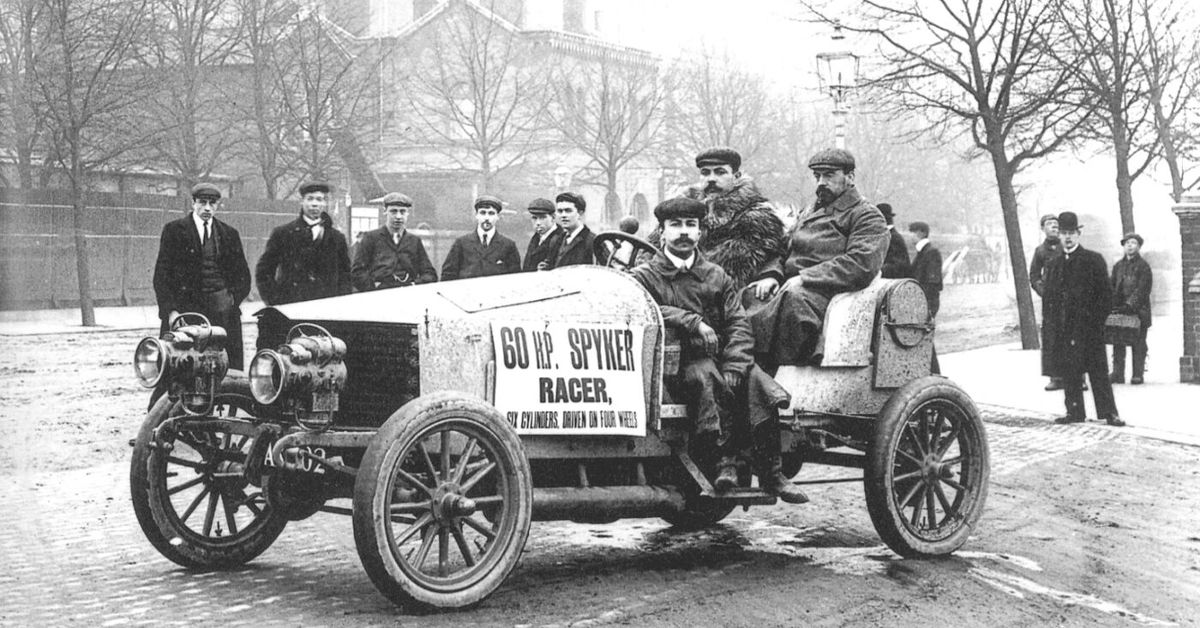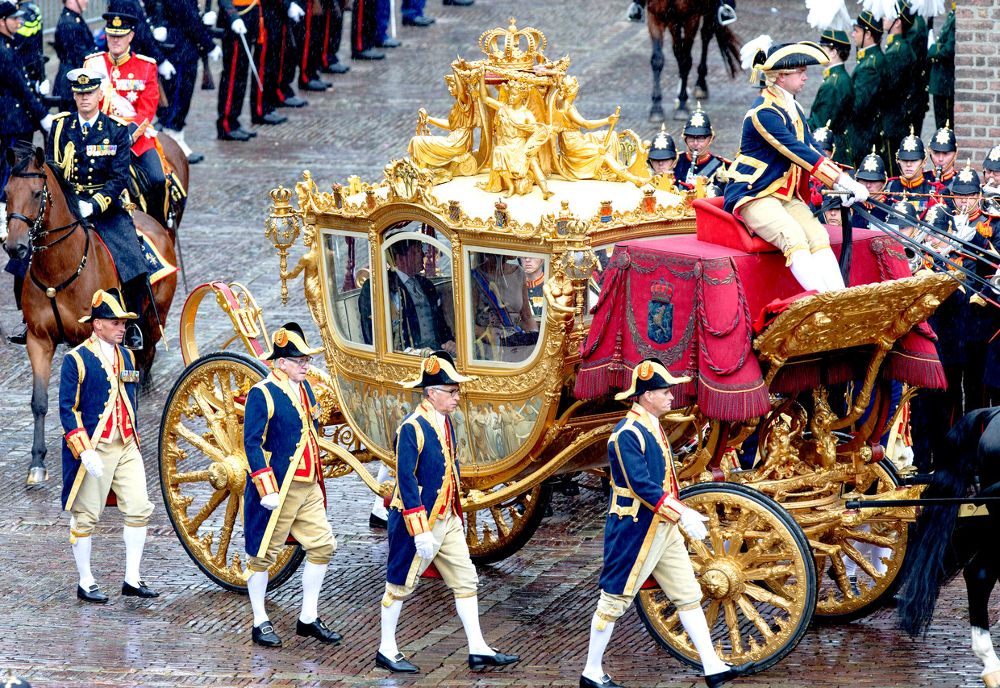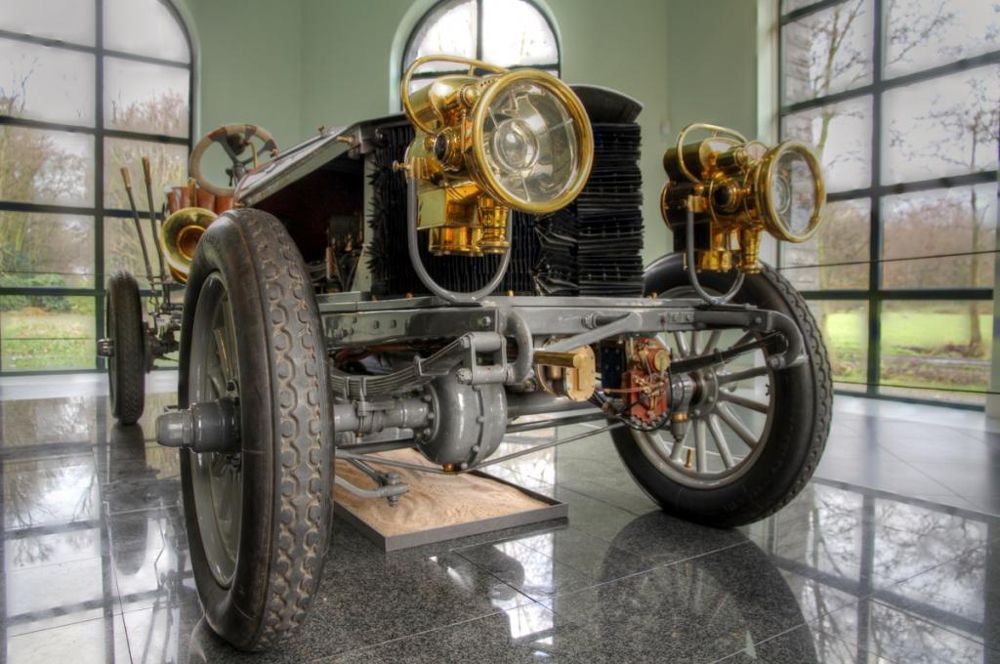It’s hard to believe that the first all-wheel-drive (AWD) car dates back to 1903, and harder still, to imagine that it was produced by a small Dutch company originally named Spijker, which when translated into English, means “nail”.
Even though the Cotta-Mobile’s 4WD design, using a center-mounted gearbox to drive chains that powered the front and rear axles were patented in 1900, the car was really more carriage than car. Thus, the Spyker 60-HP, originally destined for racing, is widely acknowledged as being the first AWD car.
One of the most significant cars in motoring history, the Spyker 60-HP was not only the first petrol-driven passenger car to sport AWD, but it was also the first car in the world to be equipped with a six-cylinder engine and the first car with a braking system connected to all four wheels.
So, how did this small Dutch company, founded in 1880 by brothers Jacobus and Hendrik-Jan Spijker to produce horse-drawn carriages, come up with this engineering masterpiece?
The History Behind The Spyker Company That Created The World’s First 4WD Car
Almost from the outset, it was clear that the Spijker carriage company was destined for greatness. By the end of the 19th Century, largely thanks to its reputation for building high-quality, durable products, Spijker had already secured several foreign export contracts.
This globalization inspired a subtle name change in 1898 when "Spyker" became the firm’s brand name. Even though Spijker, pronounced "spaiker" in Dutch, is phonetically similar to "Spyker", the latter had more international appeal.
In the same year Spyker delivered the best known Spyker product of all - the Queen of The Netherlands, Wilhelmina’s opulent "Golden State Coach". It was ordered by the people of The Netherlands with a price rumored to be the equivalent of about 960,000 hours of schooled labor. This gold-covered neo-classicly styled carriage is still being used by the Dutch royalty for special occasions to this day.
This was also the year in which the Spijker brothers were introduced to the motorcar. The cars arriving in Amsterdam for the 1898 Paris-Amsterdam-Paris motor race made a great impression on them and later that year they bought their first car, a Benz. It was in that year that they decided to start building cars.
Consequently, the Spijker brothers entered into an agreement with the Benz company to import and assemble Benz cars and sell them as Spyker-Benz.
A new car production line was constructed over the old historic foundations of the Trompenburg manor in Amsterdam, with the company being renamed the "Industrial Company Trompenburg". This, because the management felt that Trompenburg sounded more impressive than Spyker.
The first cars rolled off the production line in 1899 and were presented to the public on the RAI exhibit in Amsterdam in 1900. The range consisted of two models: the Spyker-Benz 3 HP Comfortable and the 5 HP Duc (similar to the Benz Victoria).
The first real Spyker appeared in 1900, it was a 5 HP model based on the American Duplex 2-cylinder boxer engine and a design of the Spyker brothers themselves. It wasn't a success and no more than a few were made.
The company continued to produce in-house designed cars over the next few years, but with little success. This, however, all changed in 1903 with the introduction of the 6-cylinder 36/50 HP.
The Spyker 60HP Sets Many Innovative Industry Firsts
Presented at the Paris Autosalon in 1903 the extremely advanced 6-cylinder Spyker, designed by French constructor E.G. Drouard and developed by Joseph Laviolette, featured several industry firsts such as the first-ever 6-cylinder car engine, an AWD system, and brakes on all four wheels.
Later that year the side-valve engine’s capacity was increased to 538.3 cu in. With a bore of 4.72 inches and stroke of 5.04 inches and a compression ratio of 4.59:1 the Spyker now produced 60 HP, which was claimed to be substantially more powerful than anything else available at the time.
In order to get the power to all four wheels on the Spyker, Laviolette designed the system with 3 differentials making it a full-time four-wheel-drive vehicle.
Laviolette also designed the transmission that divided the power between the front and rear axles. The flywheel featured a cone-clutch that sent power to a separate gearbox with a differential to split power between the front and rear driveshafts. And to stop the heavy, powerful Spyker 60HP from its purported top speed of 80 mph he equipped it with brakes on all four wheels.
Built as a race car, it was unfortunately not ready in time for the 1903 Paris-Madrid race. However, the potential of the car attracted enough international attention to prompt Spyker into producing a road-going version. Thus the 60 HP 6-cylinder model was released as a normal road car with an assortment of customized bodywork. In 1904 it was one of the most expensive cars on the market and was available up to 1907.
As for the original Spyker 60HP racer: After being restored incompetently in the early 1920s, and following the bankruptcy of the company, the Spyker was bought by a former director. From 1953 to 1993 the car, which now had extensively modified bodywork, was housed in various Dutch museums until it was acquired by the Louwman Museum. The car was restored over a five-year period to its original condition as displayed at Crystal Palace in 1904.



